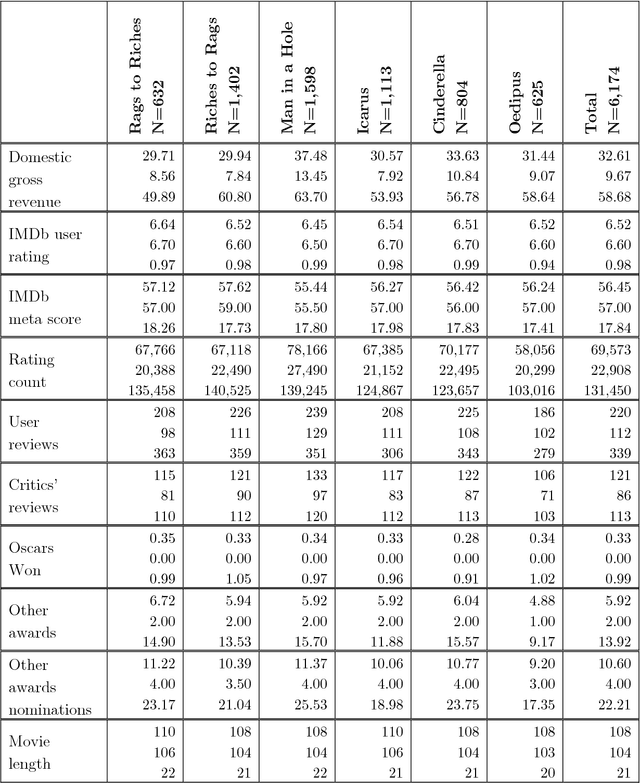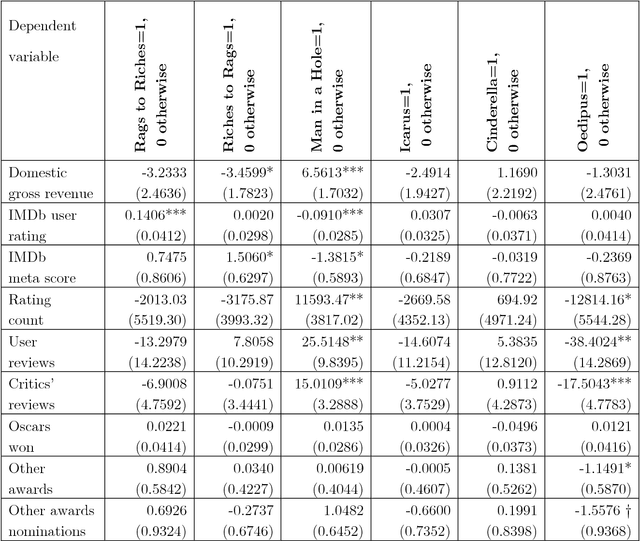The Data Science of Hollywood: Using Emotional Arcs of Movies to Drive Business Model Innovation in Entertainment Industries
Paper and Code
Jul 10, 2018



Much of business literature addresses the issues of consumer-centric design: how can businesses design customized services and products which accurately reflect consumer preferences? This paper uses data science natural language processing methodology to explore whether and to what extent emotions shape consumer preferences for media and entertainment content. Using a unique filtered dataset of 6,174 movie scripts, we generate a mapping of screen content to capture the emotional trajectory of each motion picture. We then combine the obtained mappings into clusters which represent groupings of consumer emotional journeys. These clusters are used to predict overall success parameters of the movies including box office revenues, viewer satisfaction levels (captured by IMDb ratings), awards, as well as the number of viewers' and critics' reviews. We find that like books all movie stories are dominated by 6 basic shapes. The highest box offices are associated with the Man in a Hole shape which is characterized by an emotional fall followed by an emotional rise. This shape results in financially successful movies irrespective of genre and production budget. Yet, Man in a Hole succeeds not because it produces most "liked" movies but because it generates most "talked about" movies. Interestingly, a carefully chosen combination of production budget and genre may produce a financially successful movie with any emotional shape. Implications of this analysis for generating on-demand content and for driving business model innovation in entertainment industries are discussed.
 Add to Chrome
Add to Chrome Add to Firefox
Add to Firefox Add to Edge
Add to Edge